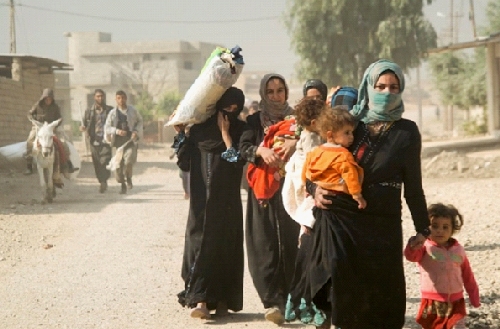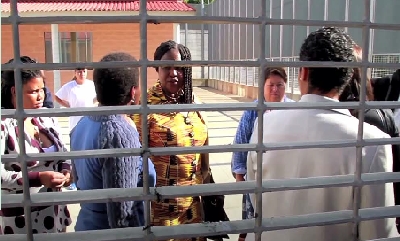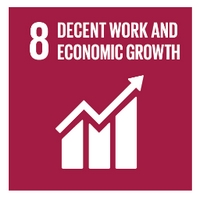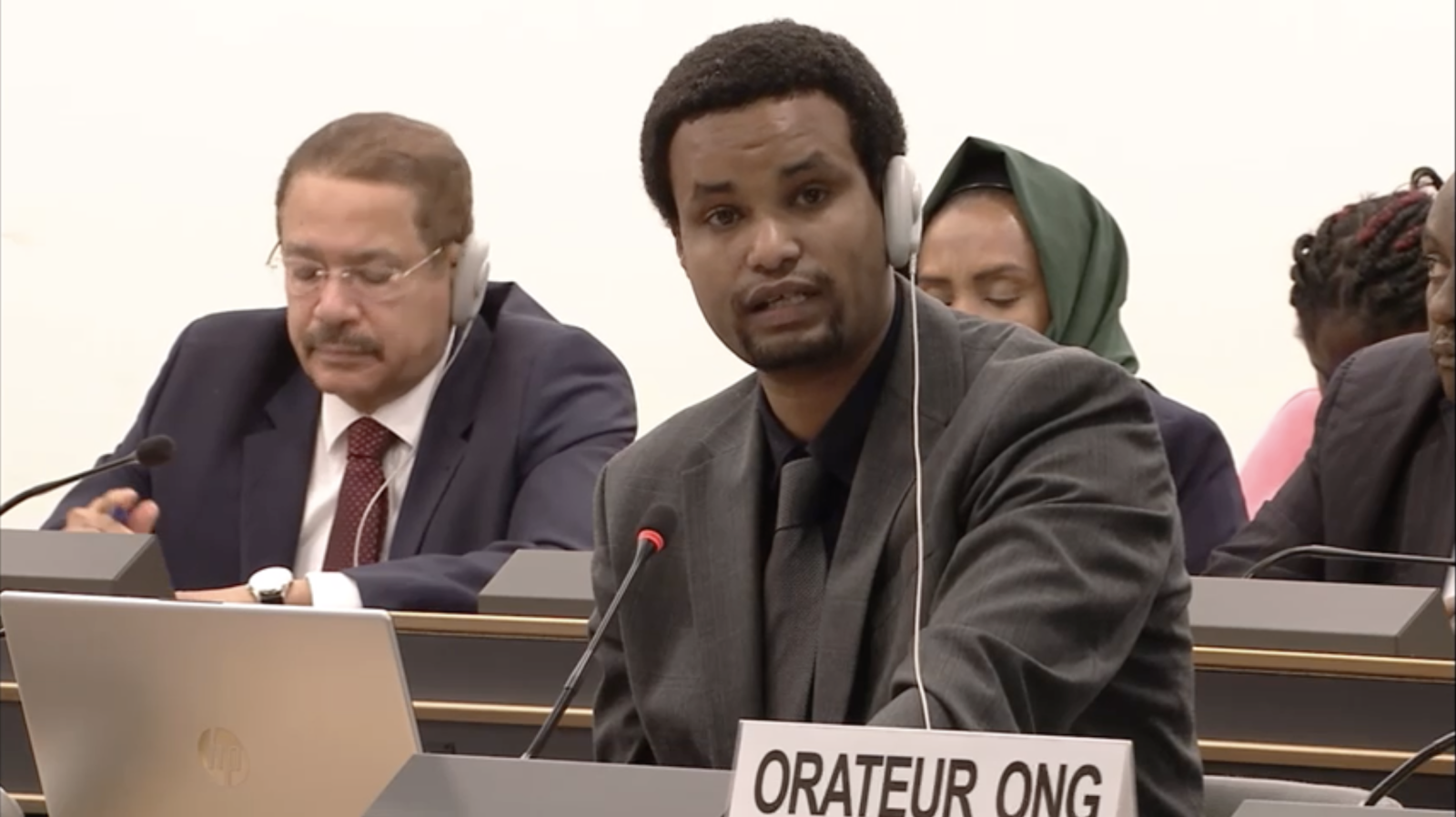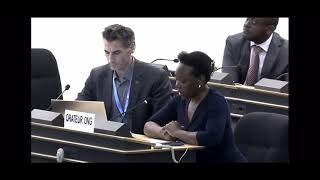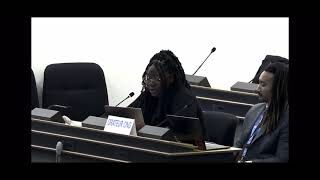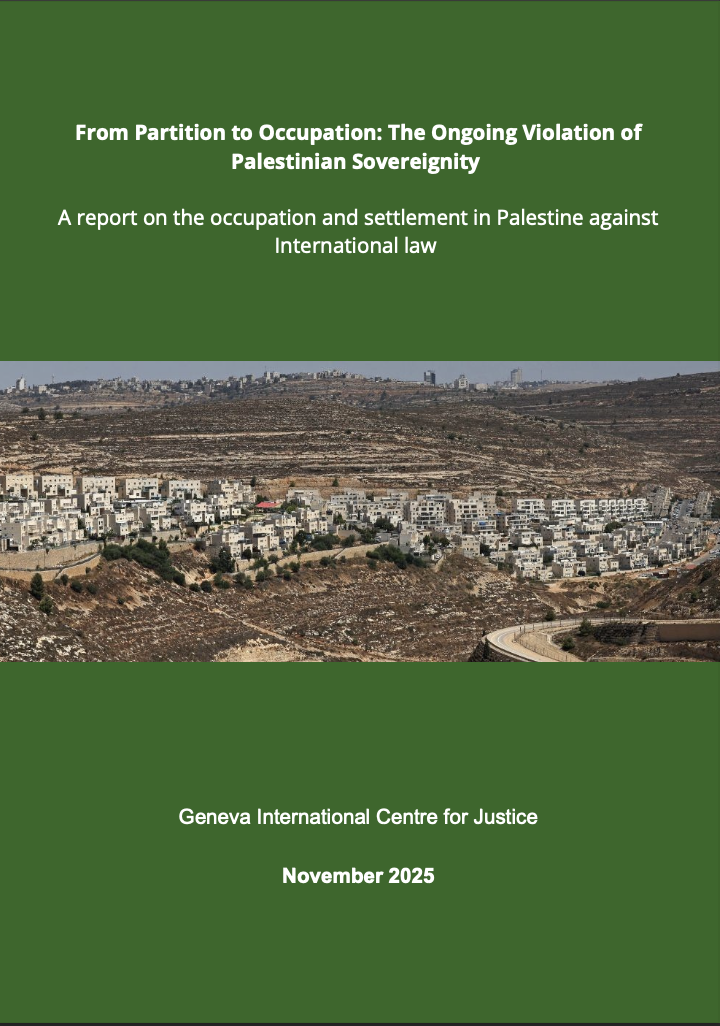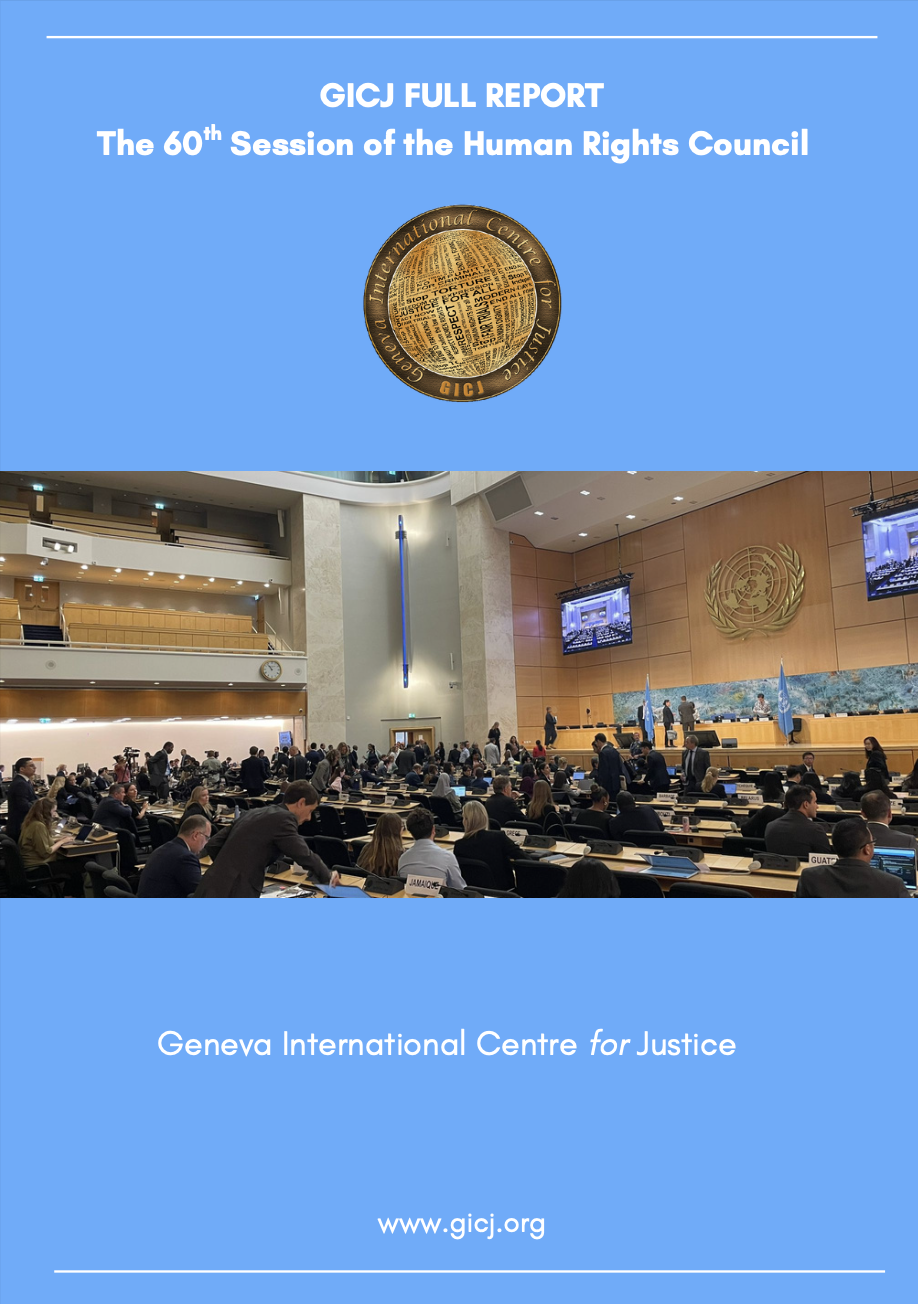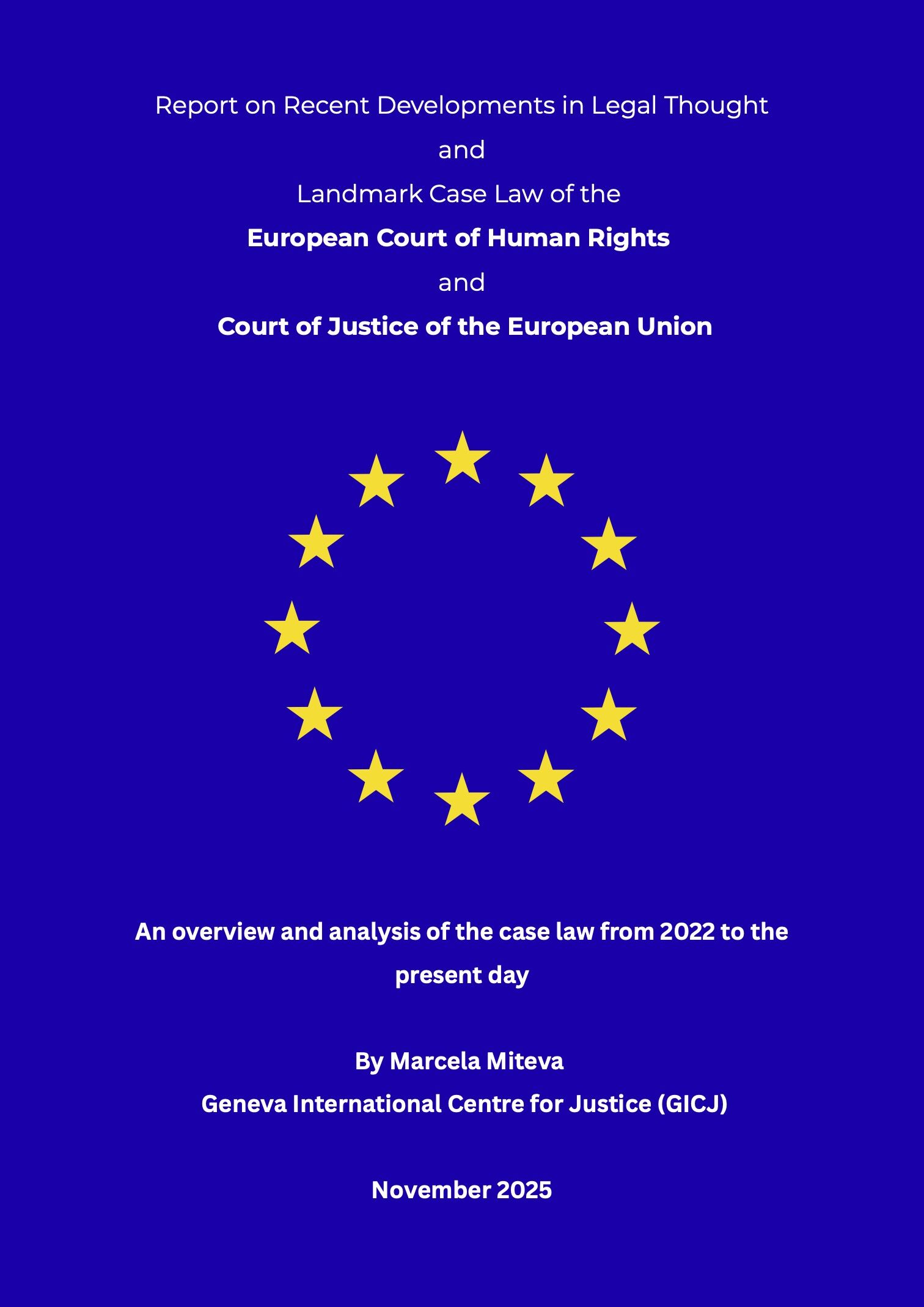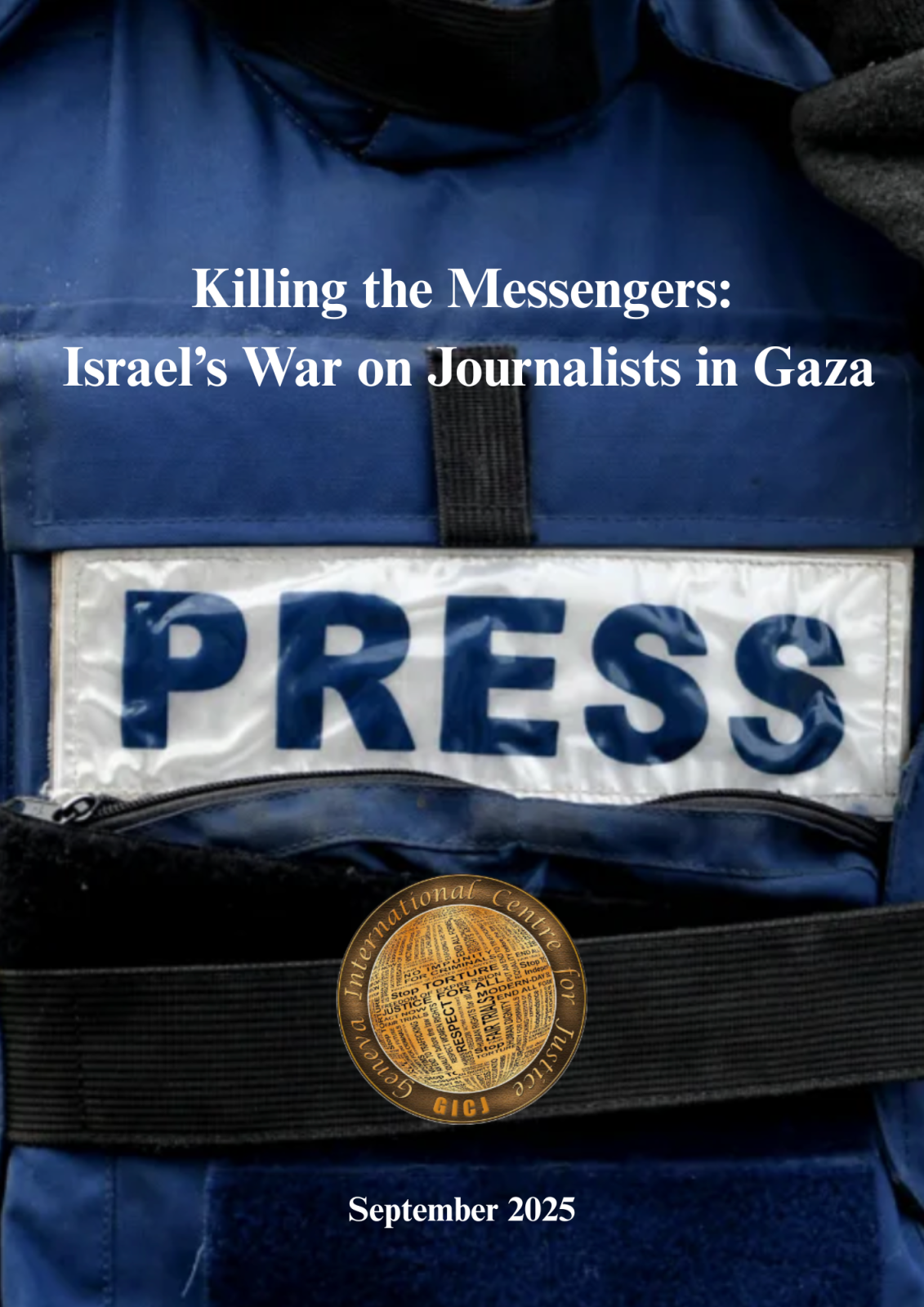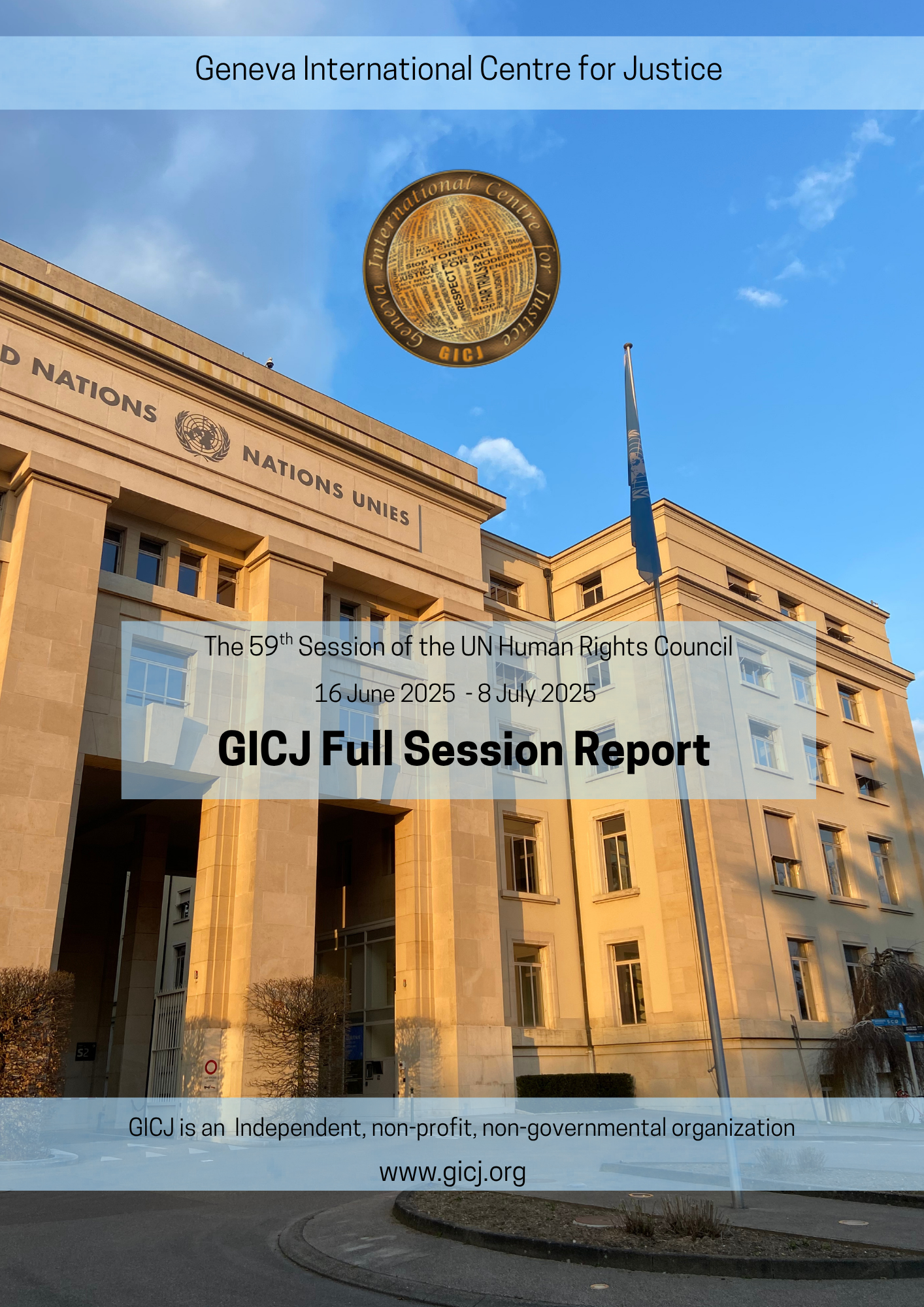30 July 2019
By Aida Sahraoui Soler and Chris Gawronski
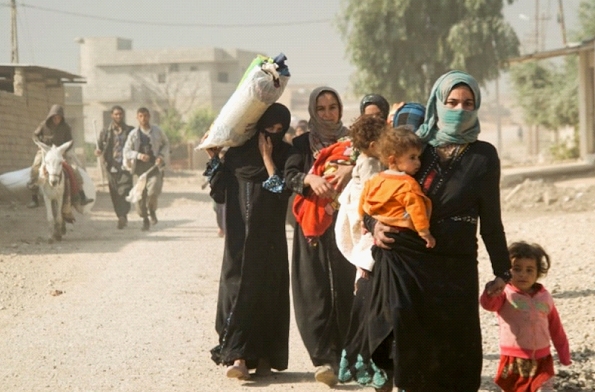 Human trafficking (or trafficking in persons) is a serious crime under international law and a grave violation of human rights. It comes in a wide range of forms, including some that can outwardly resemble lawful situations. This can make trafficking difficult to detect and combat. Human trafficking is often associated with particular activities or groups of people, such as sexual exploitation of women or forced labour by men. However, by means of the Palermo Protocol, international law casts a much wider net and incorporates a much broader range of situations where people are exploited such as forced begging, child soldiering, early marriage, and domestic servitude.
Human trafficking (or trafficking in persons) is a serious crime under international law and a grave violation of human rights. It comes in a wide range of forms, including some that can outwardly resemble lawful situations. This can make trafficking difficult to detect and combat. Human trafficking is often associated with particular activities or groups of people, such as sexual exploitation of women or forced labour by men. However, by means of the Palermo Protocol, international law casts a much wider net and incorporates a much broader range of situations where people are exploited such as forced begging, child soldiering, early marriage, and domestic servitude.
While human trafficking takes place in all parts of the world, certain circumstances are more likely to give rise to trafficking. Customarily, trafficking networks target impoverished communities by exploiting their vulnerabilities: need for money, desire for a better future for the children, and, especially in the case of isolated communities, naiveté about the outside world and the practice of trafficking. According to a report of the UN Special Rapporteur on trafficking in persons, especially women and children, human trafficking is also a prevalent characteristic of modern conflict.
Several widely ratified international and regional instruments provide the framework for addressing human trafficking. In addition to these legal obligations, the 2030 Agenda for Sustainable Development, adopted unanimously by the UN General Assembly in September 2015, renewed global political commitment to combat human trafficking and protect victims. Although most States have enacted anti-trafficking laws and have ratified the Protocol to Prevent, Suppress and Punish Trafficking in Persons Especially Women and Children, many of these laws are only recently enacted and enforcement of these laws has been slow with few or no convictions reported for many countries.
Geneva International Centre for Justice (GICJ) condemns human trafficking and all other forms of exploitation and calls on all members of the international community to increase efforts to combat this grave crime through effective cooperation and creation of a multilateral human rights-based approach that is sensitive to gender and migration dynamics.
INTRODUCTION
Human trafficking (or trafficking in persons) is a serious crime under international law and a grave violation of human rights. Every year, countless men, women and children fall into the hands of traffickers, in their own countries and abroad. The number of victims is staggering, with official reports showing at least tens of thousands and reliable estimates in the tens of millions. Trafficking is difficult to detect and comes in many forms as highlighted by an international agreement called the Palermo Protocol.[1] The UN Office on Drugs and Crime (UNODC) assists States in their efforts to implement the Palermo Protocol as part of the larger global fight against human trafficking.
WHAT IS HUMAN TRAFFICKING?
Definition of Human Trafficking
Human trafficking comes in a wide range of forms, including some that can outwardly resemble lawful situations. This can make trafficking difficult to detect and combat. Article 3 of the Palermo Protocol defines trafficking in adult persons as the “recruitment, transportation, transfer, harbouring or receipt of persons, by means of the threat or use of force or other forms of coercion, of abduction, of fraud, of deception, of the abuse of power or of a position of vulnerability or of the giving or receiving of payments or benefits to achieve the consent of a person having control over another person, for the purpose of exploitation.” For purposes of this definition, exploitation includes “at a minimum, the exploitation of the prostitution of others or other forms of sexual exploitation, forced labour or services, slavery or practices similar to slavery, servitude or the removal of organs.”[2]
|
Definition of Trafficking in Adult Persons
|
In other words, there are three key elements that must be present for a situation of trafficking in adult persons to exist: 1) action (recruitment, transport, etc.); 2) means (threat, abduction, etc.); and 3) the purpose of exploitation. When it comes to children (anyone under the age of 18), however, the definition has a critical difference: no “means” is required for trafficking to occur. As a result, child trafficking will exist simply if the child is subjected to 1) an action (recruitment, transport, etc.) for the 2) purpose of exploitation.
Human trafficking is often associated with particular activities or groups of people. However, the Palermo Protocol definition casts a much wider net to incorporate a much broader range of situations where people are exploited. Consider the following important aspects of this comprehensive approach to human trafficking, as described by the UN Office of the High Commission for Human Rights.
- Trafficking affects women, men and children, and involves a range of exploitative practices. Trafficking was traditionally associated with the movement of women and girls into sexual exploitation. [However, t]he international legal definition makes clear that men and women, boys and girls can all be trafficked—and that the range of potentially exploitative practices linked to trafficking is very wide. The list of examples set out in the definition is open-ended and new or additional exploitative purposes may be identified in the future.
- Trafficking does not require the crossing of an international border. The definition covers internal as well as cross-border trafficking. That is, it is legally possible for trafficking to take place within a single country, including the victim’s own.
- Trafficking is not the same as migrant smuggling. Migrant smuggling involves the illegal, facilitated movement across an international border for profit. While it may involve deception and/or abusive treatment, the purpose of migrant smuggling is to profit from the movement, not the eventual exploitation [of the person] as in the case of trafficking.
- Trafficking does not always require movement. The definition of trafficking identifies movement as just one possible way that the “action” element can be satisfied. Terms such as “receipt” and “harbouring” mean that trafficking does not just refer to the process whereby someone is moved into situations of exploitation; it also extends to the maintenance of that person in a situation of exploitation.
- It is not possible to “consent” to trafficking. International human rights law has always recognized that the intrinsic inalienability of personal freedom renders consent irrelevant to a situation in which that personal freedom is taken away. This understanding is reflected in the “means” element of the definition of trafficking. As noted by the drafters of the [Palermo] Protocol: “once it is established that deception, coercion, force or other prohibited means were used, consent is irrelevant and cannot be used as a defense.”[3]
Forms of Human Trafficking
As illustrated by the list of practices to be exploitative, the definition includes a broad range of forms of human trafficking such as forced begging, domestic servitude, debt bondage, forced and child marriage in addition to the more well-known practices of sexual exploitation and forced labour. Consider the following common forms of human trafficking and the broad range of circumstances in which they can occur.
- Sexual exploitation: any actual or attempted abuse of a position of vulnerability, differential power, or trust, for sexual purposes, including, but not limited to, threatening or profiting monetarily, socially or politically from the sexual exploitation of another.
- Sexual abuse: the actual or threatened physical intrusion of a sexual nature, whether by force or under unequal or coercive conditions. Sexual exploitation and abuse also include sexual relations with a child, in any context.
- Forced Labour: defined by Convention No. 29 concerning Forced or Compulsory Labour of the International Labour Organization (ILO) as: “all work or service which is exacted from any person under the menace of any penalty and for which the said person has not offered himself [or herself] voluntarily.”
- Domestic servitude: People working in private homes forced or coerced into serving or lied to and told they can’t leave.
- Debt bondage: the pledging of personal services as security for a debt where the value of those services is not applied towards the liquidation of the debt or their length or nature is not limited and defined. Many trafficked persons who enter into a debt with their exploiters (relating to, for example, placement or transport fees) find themselves in a situation of debt bondage.
- Forced marriage and child marriage: Forced marriages are marriages in which one or both parties have not personally expressed their full and free consent to the union. Child marriage (or early marriage) is any marriage where at least one of the parties is under 18 years of age. A child marriage is considered to be a form of forced marriage because the child is not capable of legally consenting to the marriage.[4]
THE FACE OF HUMAN TRAFFICKING
Every situation of human trafficking involves at least two parties: a victim and a trafficker. By looking at data trends, we understand that people who tend to be victims and traffickers, along with the types of trafficking, vary considerably in different geographic and cultural contexts.
Victims
In 2016, adult women comprised nearly half of all detected victims according to UNODC.[5] An analysis of the data on trafficking victims over the last 15 years revealed that women and girls together have continued to represent more than 70 per cent of detected trafficking victims globally.[6] However, men and boys are frequently victims of human trafficking and feature more prominently in certain contexts.
Victim profiles vary depending on the region of the world. For example, more than 30 per cent of the detected victims were men in South Asia, East Asia and the Pacific. These regions represent a large share in the number of global trafficking victims. However, women comprised the majority of trafficking victims in Europe and the Americas.[7]
The victim profiles also differ according to the form of trafficking considered. Generally, women and men are trafficked for different exploitative purposes. Out of all the women victims who were detected in 2016 by UNODC, 83 percent were trafficked for sexual exploitation, while forced labour was the reason for trafficking 82 percent of the detected male victims.[8]
|
Iraq IDP Crisis. - Refugees in Mosul, Northern Iraq, Western Asia. 06 November 2016. Photo: commons.wikimedia.org (Credit: Mstyslav Chernov) |
For child victims, the gender patterns for types of exploitation are different, especially for boys. Like men, boys are primarily trafficked for forced labour; however, they tend to be subjected to a wider range of exploitation. Many are subjected to other forms of exploitation such as sexual exploitation, forced begging, criminal activities, and child soldiering. As is the case with women, detected girl victims are overwhelmingly trafficked for sexual exploitation, including forced marriages. Nevertheless, a significant share of girls are also trafficked for other forms of exploitation similar to boys, including exploitative begging and forced criminal activities.[9]
Traffickers
Worldwide, the majority of traffickers are men; however, there are clear regional differences. In Eastern Europe and Central Asia, more females are convicted of human trafficking than males, with similar patterns of conviction in Central America and the Caribbean. Similarly, in East Asia and the Pacific, about half of all convicted trafficking offenders were female. By contrast, countries in Western and Central Europe report that only small proportions of offenders are women, around 20 per cent, while in the Americas, Africa and the Middle East, women comprise just over a third of those convicted of human trafficking.[10]
Most traffickers operate within their own countries or regions. More than 70 percent of convicted traffickers are citizens of the country of conviction, while a majority of the convicted foreign offenders come from countries within the same region as the country of conviction.[11]
There is also a pattern when it comes to origin and destination countries. While foreigners generally account for very few convictions of human trafficking in countries of origin, foreigners are more commonly convicted in destination countries. This is especially evident in the countries of Western and Southern Europe and the Middle East. The larger participation of foreign traffickers in these regions is explained by the fact that these are common destination areas that involve large cross-border flows of people.[12]
CONTEXT OF HUMAN TRAFFICKING
While human trafficking takes place in all parts of the world, certain circumstances are more likely to give rise to trafficking. Customarily, trafficking networks target impoverished communities by exploiting their vulnerabilities: need for money, desire for a better future for the children, and, especially in the case of isolated communities, naiveté about the outside world and the practice of trafficking. Reports of the United Nations Office on Drugs and Crimes show that most of the cases follow the same pattern: victims are recruited in the country of origin, transferred and then exploited in the country of destination, usually for the purpose of prostitution, forced labour and domestic servitude.
|
UN Special Rapporteur on trafficking in persons visits a detention center for migrants during a country visit to Italy. (Credit: Austin Haeberle) |
According to a report of the UN Special Rapporteur on trafficking in persons, especially women and children, human trafficking is also a prevalent characteristic of modern conflict.[13] Given that conflict increases impunity, it enables criminal networks to operate more easily. Additionally, the pressure to flee from conflict leads people to take exorbitant risks. The dearth of access to legal migration alternatives forces many people to use the services of illegal facilitators, which increases their risk of exploitation. In fact, internally displaced persons are highly vulnerable because they often lack legal documentation, regular access to labour markets, and have limited access to education, thus traffickers offer them what seems like a lifesaving bridge to employment and safety. Living in desperate circumstances, refugees and IDPs often feel they have no choice other than to accept the exploitative arrangements of traffickers such as organ removal.[14]
Trafficking of women and girls for sexual exploitation during conflict is shockingly common. Frequently, this includes the targeted abduction of women of ethnic minorities. ISIL, for example, forced Syrian women into marriages with its fighters and abducted thousands of Yezidi women and girls from Iraq taking them to Syria where they were forcibly married and subjected to systematic rape, forced prostitution and forced pregnancy. Refugees from the Syrian conflict are also reported to be quite vulnerable to trafficking in neighbouring countries, particularly in Jordan, Lebanon, and Turkey.[15] Syrian refugee children and women are increasingly reduced to street begging in those countries, which further increases their vulnerability to forced labour and sex trafficking.[16]
COMBATTING HUMAN TRAFFICKING
International Legal Framework
Given the widespread nature of human trafficking, and the proliferation of conflicts that increase vulnerability to trafficking, what can be done to tackle this pervasive problem?
A number of widely ratified international instruments provide the framework for addressing human trafficking. States that are parties to the following instruments are obliged to prohibit trafficking and protect the victims of trafficking:
- Palermo Protocol (2000)
- International Labour Organization (ILO) Convention No. 105 on the Abolition of Forced Labour (1957)
- ILO Convention No. 29 on Forced or Compulsory Labour (1930), and its 2014 Protocol (June 2014)
- ILO Convention No. 182 on the Worst Forms of Child Labour (1999)
- Convention on the Rights of the Child (1989), and its Optional Protocol on the Sale of Children, Child Prostitution, and Child Pornography (2000)
Regional instruments such as the Convention on Action against Trafficking in Human Beings (2005) in Europe and the Convention against Trafficking in Persons, Especially Women and Children (2015) in Southeast Asia have also been significant in strengthening the protection afforded to victims of trafficking in those regions.
In addition to these legal obligations, the 2030 Agenda for Sustainable Development, adopted unanimously by the UN General Assembly in September 2015,[17] renewed political commitment to combat human trafficking and protect victims. Target 8.7 of the Sustainable Development Goals (SDGs) calls for an end to all forms of forced labour, human trafficking, modern day slavery, and child labour by 2025. Two additional targets also address human trafficking: Target 5.2 seeks to eliminate “all forms of violence against all women and girls…, including trafficking and sexual and other types of exploitation,” and target 16.2 aims to stop “abuse, exploitation, trafficking and all forms of violence against and torture of children.”
| Key Sustainable Development Goals for Combatting Human Trafficking | |
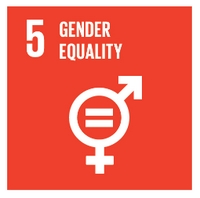 |
|
Progress toward multiple goals is essential to a strengthened, comprehensive approach to combatting trafficking in persons, especially by reducing the vulnerabilities that increase the risk of trafficking. For example, the SDGs contain targets in the areas of poverty eradication (Goal 1), gender equality and women’s empowerment (Goal 5), promoting full and productive employment and decent work (Goal 8), reducing inequality within and among countries (Goal 10), and providing access to justice for all and building effective, accountable and inclusive institutions (Goal 16). Target 10.7, which seeks to facilitate safe, orderly, regular and responsible migration, is also critical. It recognizes that realizing the benefits and full potential of migration, while addressing risks such as human trafficking, requires well-managed and well-governed approaches to migration and human mobility. [18]
In a 2019 report on progress toward achievement of the SDGs, the UN Secretary-General noted an overall increase in the detection of victims. This could represent the positive outcome of improved efforts by authorities to identify victims. Unfortunately, it might also be the result of an increase in the problem of human trafficking.[19]
National Legal Frameworks
Article 5 of the Palermo Protocol requires that trafficking in persons be criminalized in national legislation. In addition to the criminalization of trafficking itself, the Protocol also requires criminalization of the following related activities, as described on the UNODC website:
- Attempts to commit a trafficking offence
- Participation as an accomplice in such an offence
- Organizing or directing others to commit trafficking.[20]
National legislation should closely mirror the approach used by the Palermo Protocol and other international instruments. Critically, it should incorporate the broad definition of trafficking contained in the Protocol. The legislative definition should be flexible in order that the legislative framework can be responsive to the many inter-related aspects of human trafficking:
- Occurs both across borders and within a country (not just cross-border)
- Includes a range of exploitative purposes (not just sexual exploitation)
- Victimizes children, women and men (not just women or adults)
- Takes place with or without the involvement of organized crime groups.[21]
At the national level, most countries have adopted legislation to criminalize trafficking in persons as a specific offence. Usually, domestic legislation also separately establishes the most common offences related to trafficking, such as physical, sexual and psychological violence; abduction; threats to kill; unlawful imprisonment or deprivation of freedom of movement; slavery; debt-bondage; servitude; forced marriage; facilitation of irregular immigration; creation and membership of organized criminal structures or groups; production, use and possession of forged and or fraudulent identity and travel documents; money laundering; bribery and corruption of public officials.
The good news is that most States have enacted anti-trafficking laws and have ratified the Protocol to Prevent, Suppress and Punish Trafficking in Persons Especially Women and Children.[22] Unfortunately, many countries have only recently enacted these laws (with four countries that still have not criminalized human trafficking), and enforcement of these laws has been slow with few or no convictions reported for many countries.[23] This means there remains a high level of continued impunity for traffickers.
GICJ ACTIVITIES
|
GICJ presenting to CEDAW in February 2019. |
Geneva International Centre for Justice has strongly advocated for prevention, protection and prosecution in matters related to trafficking in persons. In the framework of the Universal Periodic Review, GICJ has constantly monitored compliance with the commitments to combat trafficking made by the States under review.
GICJ regularly reports to the Human Rights Council, through written and oral statements, about the trafficking of persons in various countries and contexts. For example, GICJ has reported on the recruitment of children as young as 11 years old by armed groups in Iraq and Yemen. Recruited children are forced to fight, to donate blood for injured fighters, and to serve as suicide bombers.[24]
Geneva International Centre for Justice also regularly participates in the work of treaty bodies, such as the Committee on Economic, Social and Cultural Rights (CESCR) and the Committee on the Elimination of Discrimination against Women (CEDAW).[25] For example, GICJ reported about the instability in Iraq and the resulting financial hardship facing the population that has led to a substantial increase in the vulnerability of millions of people, especially women and children, to trafficking.[26]
CONCLUSIONS
Trafficking in persons is a complex issue, both at national and international levels. There is a broad range of perpetrators, victims and geographical environments, as well as many different forms of exploitation. The phenomenon is also embedded in the complex intersection among the ever-increasing gap between rich and poor, gender inequality, and illegal and irregular migration movements. Together, these factors make the fight against human trafficking an enormous challenge – one the international community must urgently address.
Geneva International Centre for Justice (GICJ) condemns human trafficking and all other forms of exploitation. GICJ encourages government authorities to provide support and promote health services for victims of human trafficking and educational opportunities on the physical and psychological consequences of all forms of exploitation for victims. We call on all members of the international community to increase efforts to combat this grave crime through effective cooperation and creation of a multilateral human rights-based approach that is sensitive to gender and migration dynamics.
[1] The official name of the Palermo Protocol is: Protocol to Prevent, Suppress and Punish Trafficking in Persons, especially Women and Children. The Protocol is a subsidiary document of the UN Convention against Transnational Organized Crime. UNODC, United Nations Convention Against Transnational Organized Crime and the Protocols Thereto, https://www.unodc.org/unodc/en/organized-crime/intro/UNTOC.html (last visited 26 July 2019).
[2] Palermo Protocol, art. 3(a). https://www.ohchr.org/EN/ProfessionalInterest/Pages/ ProtocolTraffickingInPersons.aspx
[3] UN High Commissioner for Human Rights, Human Rights and Human Trafficking, Fact Sheet No.36, at 3–4 (2014), https://www.ohchr.org/Documents/Publications/FS36_en.pdf.
[4] Office of the High Commissioner for Human Rights, Child, Early and Forced Marriage, Including in Humanitarian Settings, https://www.ohchr.org/EN/Issues/Women/WRGS/Pages/ChildMarriage.aspx.
[5] UN Office on Drugs and Crime, Global Report on Trafficking in Persons 25 (2018), https://globalinitiative.net/global-report-on-trafficking-in-persons-2018/.
[6] Id.
[7] Id.
[8] Id. at 28.
[9] Id. at 29.
[10] Id. at 35.
[11] Id. at 35–37.
[12] Id. at 37.
[13] See Report of the Special Rapporteur on Trafficking in Persons, Especially Women and Children, UN Doc. No. A/71/303 (6 Aug. 2016).
[14] See Addressing Human Trafficking and Exploitation in Times of Crisis 6–8 (IOM, July 2015).
[15] See International Centre for Migration Policy Development, Targeting Vulnerabilities: The Impact of the Syrian War and Refugee Situation on Trafficking in Persons, A Study of Syria, Turkey, Lebanon, Jordan and Iraq
(Dec. 2015), https://www.icmpd.org/fileadmin/ICMPD-Website/Anti-Trafficking/Targeting_Vulnerabilities_ EN__SOFT_.pdf.
[16] See Olivier Peyroux, Trafficking in Human Beings in Conflict and Post-Conflict Situation (June 2015), https://www.caritas.org/wordpress/wp-content/uploads/2015/06/RESEARCH-ACTION-Trafficking-in-human-beings-and-conflicts-EN-10-juin-2015.pdf.
[17] UN General Assembly Resolution 70/1 (25 Sep. 2015).
[18] See International Organization for Migration, Combating Trafficking in Persons and Contemporary Forms of Slavery, Global Compact Thematic Paper, https://www.iom.int/sites/default/files/our_work/ODG/GCM/IOM-Thematic-Paper-Trafficking-in-persons.pdf.
[19] Report of the Secretary-General, Special Edition: Progress Towards the Sustainable Development Goals, UN Doc. No. E/2019/68 (8 May 2019).
[20] Human Trafficking, UNODC, https://www.unodc.org/unodc/en/human-trafficking/what-is-human-trafficking.html?ref=menuside (last visited 29 July 2019).
[21] Id.
[22] There are currently 174 states parties to the Protocol. A Protocol to Prevent, Suppress and Punish Trafficking in Persons, Especially Women and Children, supplementing the United Nations Convention against Transnational Organized Crime, United Nations Treaty Collection, https://treaties.un.org/pages/ViewDetails .aspx?src=TREATY&mtdsg_no=XVIII-12-a&chapter=18&clang=_en (last visited 29 July 2019).
[23] See UN Office on Drugs and Crime, supra note 7, at 45.
[24] See Addressing Human Trafficking and Exploitation in Times of Crisis, supra note 19, at 4 n.7.
[25] Geneva International Centre for Justice, GICJ Urges States and UN Bodies To End Human Trafficking (22 Feb. 2019), https://www.gicj.org/conferences-meetings/treaty-bodies-sessions/1530-gicj-urges-states-un-bodies-to-end-human-trafficking.
[26] GICJ participation at the 56th Session of the Committee on Economic, Social and Cultural Rights (CESCR), GICJ, https://www.gicj.org/gicj-reports/499-statement-delivered-by-gicj-56-session-cescr-2.
***
Keywords:
trafficking, human trafficking, trafficking in persons, exploitation, Palermo Protocol, Geneva, geneva4justice, GICJ, Geneva International Centre for Justice, human rights
Justice, Human rights, Geneva, geneva4justice, GICJ, Geneva International Centre For Justice




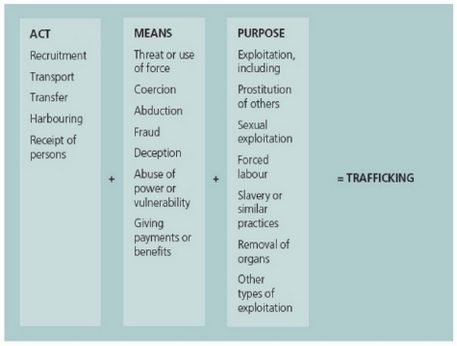 (Source: UNODC)
(Source: UNODC)